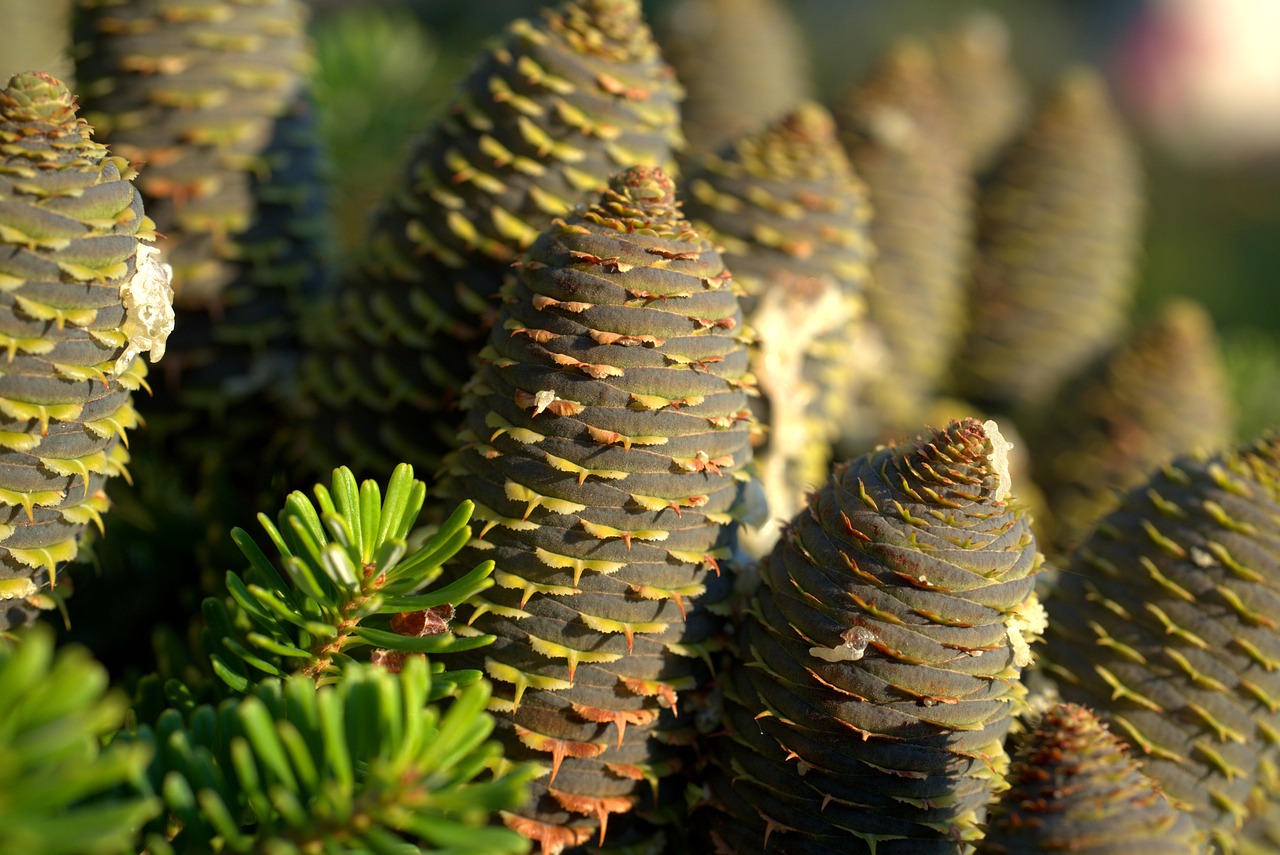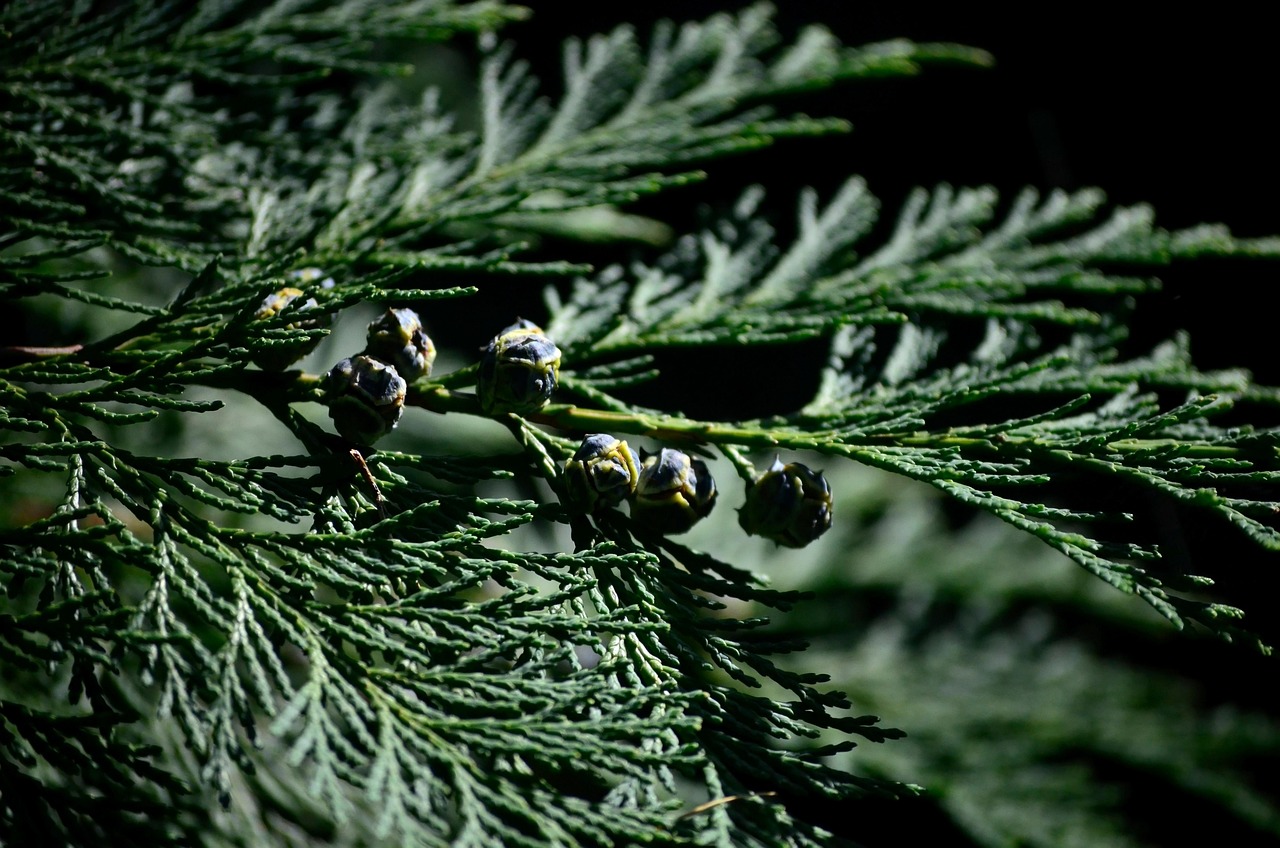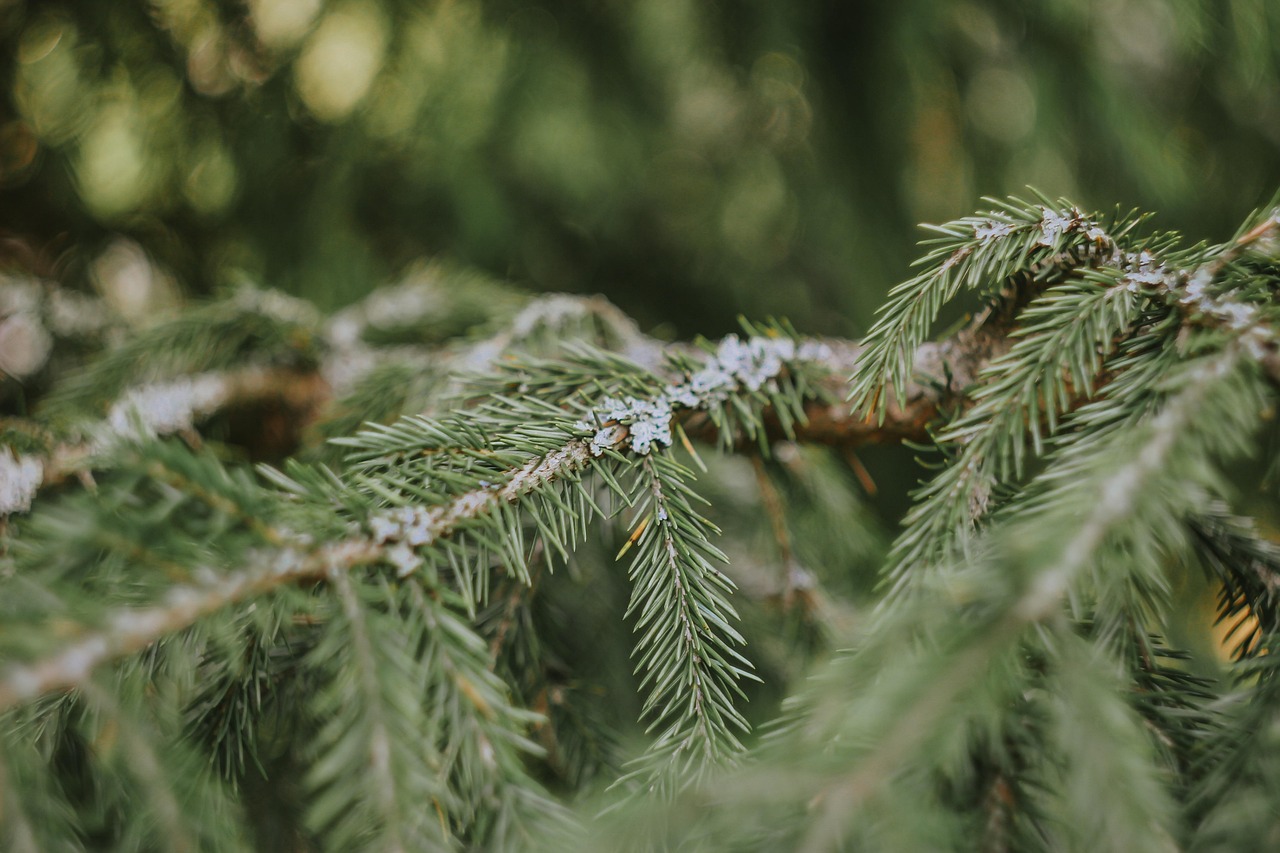Why Spruce Trees Are the Ultimate Choice for Year-Round Beauty
Spruce trees are celebrated for their striking appearance and adaptability, making them an ideal choice for year-round beauty in gardens and landscapes. Their vibrant foliage, impressive height, and resilience to various climates contribute to their enduring popularity among homeowners and landscapers alike.
When considering options for enhancing your outdoor space, spruce trees stand out for several reasons. They offer not only aesthetic appeal but also functional benefits that can elevate the ambiance of any landscape. With a variety of species available, each with unique characteristics, spruce trees can cater to diverse landscaping needs and preferences.

One of the key attributes of spruce trees is their evergreen nature. Unlike deciduous trees that lose their leaves in winter, spruces retain their lush needles throughout the year. This quality ensures that they provide visual interest regardless of the season. Whether blanketed in snow during winter or surrounded by colorful flowers in spring, spruce trees consistently enhance the beauty of any setting.
| Attribute | Description |
|---|---|
| Evergreen Foliage | Retains needles year-round for consistent beauty. |
| Variety of Species | Includes various types like Norway, Blue, and White spruce. |
| Adaptability | Thrives in different climates and soil types. |
| Wildlife Habitat | Provides shelter and food for various wildlife species. |
In addition to their striking appearance, spruce trees are known for their adaptability to various environments. They thrive in a wide range of soil types and climatic conditions, making them a versatile choice for different regions. Whether in a mountainous area or a flat suburban yard, spruce trees can flourish and maintain their majestic stature.
Another attractive feature of spruce trees is their ability to create a natural habitat. The dense branches and foliage provide shelter for birds and other wildlife. This characteristic not only contributes to biodiversity but also allows homeowners to enjoy the beauty of nature right in their backyards.
Choosing the Right Spruce Tree
When selecting a spruce tree for your landscape, it is essential to consider the specific species that will best suit your needs. Different types of spruce trees vary in size, shape, and color. For instance, the Norway spruce is known for its tall and elegant stature, while the Blue spruce boasts striking blue-tinged needles that can add a unique touch to any garden.
- Norway Spruce: Fast-growing and tall, ideal for privacy screens.
- Blue Spruce: Recognized for its stunning blue needles, perfect as a focal point.
- White Spruce: Hardy and adaptable, suitable for various soil types.
Incorporating spruce trees into your landscape design can create a sense of permanence and stability. Their robust structure and enduring beauty ensure that they will be a cherished part of your garden for years to come. By carefully selecting the right species and considering their placement within your outdoor space, you can maximize the aesthetic appeal and functionality of these magnificent trees.
The versatility of spruce trees makes them suitable for various landscaping styles. They can complement contemporary designs with clean lines or enhance traditional gardens with their classic beauty. Regardless of your design preferences, spruce trees are sure to add an element of elegance and charm to your outdoor environment.
As you contemplate your landscaping choices, the many benefits of spruce trees become evident. Their year-round beauty, adaptability, and ecological contributions make them an exceptional choice for any garden enthusiast or homeowner looking to enrich their outdoor experience.
Benefits of Spruce Trees in Landscaping

Spruce trees offer numerous benefits that extend beyond their aesthetic appeal. Their robust nature and unique characteristics make them valuable additions to any landscape. Understanding these advantages can help homeowners and gardeners appreciate the full potential of incorporating spruce trees into their outdoor spaces.
Environmental Benefits
Spruce trees contribute significantly to the environment. They play a crucial role in improving air quality, supporting wildlife, and enhancing soil health. Here are some key environmental benefits:
- Air Purification: Spruce trees absorb carbon dioxide and release oxygen, helping to improve air quality.
- Wildlife Habitat: Their dense foliage provides shelter and nesting sites for various bird species and other wildlife, promoting biodiversity.
- Soil Protection: The root systems of spruce trees help prevent soil erosion and maintain soil structure.
Seasonal Appeal
The seasonal changes bring a new dimension to the beauty of spruce trees. Their ability to maintain vibrant foliage year-round ensures they remain visually appealing no matter the season. Here’s how spruce trees shine in different seasons:
- Spring: New growth emerges, showcasing bright green needles that signify renewal.
- Summer: The lush, green foliage creates a vibrant backdrop for blooming flowers and other plants.
- Autumn: While many trees change color, spruce trees maintain their deep green hues, providing contrast against the fall palette.
- Winter: Covered in snow, spruce trees create a picturesque winter landscape, often considered iconic in holiday decorations.
Low Maintenance Requirements
Another advantage of spruce trees is their low maintenance needs. Once established, they require minimal care compared to other tree species. This quality makes them particularly appealing for busy homeowners or those new to gardening. Key aspects of their low maintenance include:
- Drought Resistance: Spruce trees are generally drought-tolerant, requiring less frequent watering once established.
- Pest Resistance: They are relatively resistant to many common pests and diseases, reducing the need for chemical treatments.
- Minimal Pruning: Spruce trees do not require extensive pruning, allowing for a natural growth habit that enhances their beauty.
Cultural Significance of Spruce Trees

Spruce trees hold cultural importance in many regions around the world. Their majestic presence has been celebrated in folklore, art, and even architecture. Exploring this cultural significance can deepen one’s appreciation of these trees.
In Folklore and Mythology
Various cultures have woven spruce trees into their narratives. They often symbolize strength, endurance, and resilience. In some traditions, spruce trees are associated with protection and are believed to ward off negative energies. For example:
- Native American Traditions: Spruce trees hold sacred meanings and are often used in ceremonies and rituals.
- European Folklore: Spruce trees are linked to winter celebrations, representing everlasting life during the cold months.
In Modern Usage
Today, spruce trees are not only appreciated for their beauty but also utilized in various industries. Their wood is valued for its strength and versatility in construction and woodworking. Additionally, they are commonly used as:
- Christmas Trees: Spruce trees are popular choices for holiday decorations due to their full shape and pleasant fragrance.
- Lumber Production: The wood from spruce trees is used in making furniture, musical instruments, and construction materials.
The myriad benefits of spruce trees make them a compelling choice for anyone looking to enhance their landscape or garden. Their environmental contributions, seasonal beauty, low maintenance requirements, and cultural significance all combine to create an enduring appeal that resonates with many people.

Caring for Spruce Trees
To fully enjoy the beauty and benefits of spruce trees, proper care is essential. While they are low maintenance, some basic practices can ensure healthy growth and longevity. Understanding their needs will help you cultivate a thriving spruce tree in your landscape.
Planting Considerations
When planting spruce trees, selecting the right location and preparing the soil is crucial. Here are some key factors to consider:
- Sunlight: Spruce trees thrive in full sunlight. Choose a location that receives at least six hours of direct sun per day.
- Soil Type: They prefer well-drained soil with a slightly acidic to neutral pH. Amending the soil with organic matter can improve its quality.
- Spacing: Ensure adequate space between trees to allow for their mature size. This prevents overcrowding and promotes healthy growth.
Watering Needs
Watering is vital, especially during the early stages of growth. Here are some tips for watering spruce trees:
- Initial Watering: Water newly planted spruce trees thoroughly to help establish their roots.
- Consistency: Keep the soil consistently moist but not soggy during the first year. Gradually reduce watering as the tree matures.
- Drought Conditions: During extended dry periods, check the soil moisture and water if necessary to prevent stress.
Fertilization Practices
Fertilizing spruce trees can enhance their growth and foliage color. Here’s how to approach fertilization:
- Timing: Apply fertilizer in early spring before new growth begins.
- Type of Fertilizer: Use a balanced, slow-release fertilizer formulated for evergreen trees. Follow the manufacturer’s instructions for application rates.
- Avoid Over-Fertilization: Too much fertilizer can harm your tree. Stick to recommended amounts to maintain healthy growth.
Pest and Disease Management
While spruce trees are generally resistant to pests and diseases, monitoring them regularly can help catch potential issues early. Here are common pests and diseases to watch for:
Pests
The following pests may affect spruce trees:
- Spruce Budworms: These caterpillars feed on new growth, causing needle loss. Early detection is essential for effective management.
- Aphids: These small insects can cause leaf curling and yellowing. Natural predators like ladybugs can help control their populations.
Diseases
Common diseases affecting spruce trees include:
- Needle Cast: This fungal disease causes needles to turn yellow and drop prematurely. Proper spacing and airflow can help prevent it.
- Root Rot: Overwatering or poorly drained soil can lead to root rot. Ensure good drainage and avoid excessive watering.
Pruning Techniques
Pruning spruce trees is not always necessary, but it can help maintain their shape and health. Here are some guidelines for effective pruning:
- Timing: The best time to prune is late winter or early spring before new growth starts.
- Focus on Dead or Damaged Branches: Remove any dead, damaged, or diseased branches to promote healthy growth.
- Avoid Topping: Topping the tree (cutting off the top growth) can harm its health. Aim to preserve its natural shape.
Caring for spruce trees involves thoughtful planning and attention to detail. By understanding their needs and addressing potential challenges, you can ensure that these magnificent trees thrive in your landscape for years to come.
The Aesthetic Value of Spruce Trees
The aesthetic appeal of spruce trees cannot be overstated. Their unique characteristics contribute significantly to the overall beauty of gardens and landscapes. Here are some aspects that highlight their visual impact:
Variety in Color and Texture
Spruce trees come in various species, each offering different colors and textures. Some notable examples include:
- Blue Spruce: Known for its striking blue-gray foliage, this tree adds a unique color dimension to any landscape.
- Norway Spruce: This species has dark green needles that create a lush appearance, providing a beautiful backdrop for other plants.
Structural Elements
The tall, conical shape of spruce trees adds vertical interest to landscapes. They can serve as focal points or anchor plants in garden designs. Here’s how they enhance structural elements:
- Privacy Screens: When planted in rows, spruce trees create natural barriers that provide privacy while enhancing beauty.
- Windbreaks: Their dense foliage serves as effective windbreaks, protecting other plants from harsh winds.
The ability of spruce trees to blend seamlessly into various landscaping styles further emphasizes their aesthetic value. Whether used in formal gardens, naturalistic settings, or contemporary designs, they enhance the beauty of any outdoor space.
Additional Uses of Spruce Trees
Beyond their beauty and environmental benefits, spruce trees have a variety of practical uses that make them even more valuable in landscaping and beyond. Understanding these additional functions can help homeowners appreciate the full range of advantages these trees offer.
Wood Products
The wood of spruce trees is known for its light weight and strength, making it a popular choice in various industries. Here are some common products made from spruce wood:
- Lumber: Spruce lumber is widely used in construction, especially for framing and flooring due to its structural integrity.
- Musical Instruments: The resonance quality of spruce wood makes it ideal for crafting high-quality musical instruments such as pianos and violins.
- Plywood: Spruce is commonly used in the production of plywood, which is utilized in furniture and cabinetry.
Medicinal Uses
Various parts of the spruce tree have been used traditionally for medicinal purposes. While not a substitute for professional medical advice, some common uses include:
- Essential Oils: Spruce needles can be distilled to produce essential oils used in aromatherapy for their calming effects.
- Herbal Remedies: Some cultures have used spruce resin for its antiseptic properties to treat minor wounds.
Ornamental Uses
In addition to their structural benefits, spruce trees serve ornamental purposes in landscapes. Here’s how they can be utilized:
- Garden Accents: Smaller species of spruce can be used as accent plants in flower beds or borders, adding texture and color.
- Formal Landscaping: Their symmetrical shape makes them ideal for formal gardens, where they can be pruned into specific shapes.
Final Thoughts
Spruce trees truly embody the essence of year-round beauty and functionality. Their evergreen nature ensures that they provide a lush backdrop throughout the seasons, while their structural characteristics add vertical interest to landscapes. With minimal maintenance requirements, they are an excellent choice for both novice gardeners and seasoned horticulturists alike.
The environmental benefits of spruce trees cannot be overlooked. They improve air quality, provide habitats for wildlife, and contribute to soil health. Furthermore, their versatility extends to practical uses in industries ranging from construction to music, demonstrating their importance beyond mere aesthetics.
Caring for spruce trees is straightforward, making them accessible for homeowners looking to enhance their outdoor spaces. From planting and watering to managing pests and diseases, understanding their needs can lead to thriving specimens that enrich any landscape.
Ultimately, whether you are seeking to create a stunning garden, establish privacy screens, or simply enjoy the beauty of nature, spruce trees stand out as an exceptional choice. Their combination of aesthetic appeal, environmental contributions, and low maintenance makes them an invaluable asset to any landscape design.
As you consider your landscaping options, let the allure of spruce trees inspire you to create a beautiful and sustainable outdoor environment that you and your family can enjoy for years to come.
